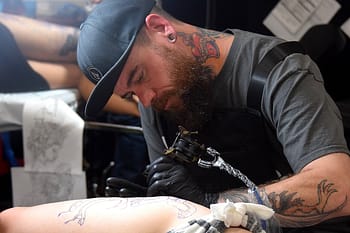It is a cliche to begin a story about a rally with a quote from a funny sign, but one small piece of floppy brown cardboard floating down 40th Street in Manhattan on Saturday seemed to capture the mood of this weekend’s mass opposition with “Hands Off” protests against President Donald Trump: “Where do I start?”
You could meet a dozen people and hear at least a dozen different existential threats. Hands off Social Security. Hands off public health grants. Hands off student visas. Hands off women. Hands off trans people. Hands off our tax dollars.
Hands off Greenland. Hands off books. Hands off 401ks. Hands off immigrants. Hands off Mahmoud Khalil. Hands off grocery prices. Hands off unions.
I even talked to a woman clutching a sign that said “Hands off Libby”—the popular e-reader for public library systems which is now in jeopardy thanks to massive cuts to the federal Institute of Museum and Library Services.
This barrage of grievances offered a snapshot of the new Trump administration’s multi-front war on modernity. But it also got at something essential about the current anti-Trump movement.
People weren’t taking action just to protest what the president and his movement represented, but because of visceral fear—real fear—of what he had already done, and that once impossible things were now very much possible.
People had lived through a Trump administration before. They were taking to the streets now, in part, because they had not lived through this.
That Saturday’s protests happened at all is notable. After Trump’s inauguration was not met with massive demonstrations, as it had been in 2017, a New York Times story declared the “Resistance” era over. But in recent weeks, as universities, law firms, big businesses, and most of the United States Congress have rolled over, rank-and-file Trump opponents have begun to make their anger heard.
Hundreds of people began showing up at Tesla dealerships. Tens of thousands of people flocked to see Bernie Sanders and Alexandria Ocasio-Cortez. And this weekend, people flocked to rallies in all 50 states, in small towns and at massive demonstrations like the one I attended in New York, where tens of thousands of people packed Fifth Avenue for blocks, as part of a furious new popular front.
You can stop asking where the mass opposition is now—it’s here.
“I’m a centrist in terms of politics in general,” Linda Brown of New York told me as she waited for the line to move. “But batshit crazy is batshit crazy.”
I spent a lot of time at anti-Trump demonstrations eight years ago, and the aesthetics now are, in a lot of ways, pretty similar to what they were back then. Saturday’s rallies were organized, in part, by Indivisible, the ur-Resistance group of the first Trump administration that grew from a Google Doc into a nationwide network.
Cardboard signs displayed straight-from-social media nicknames (Cheeto, Muskrat, etc.) and droll complaints (“I’ve seen better cabinets at Ikea”). Attendees leaned white and boomer. I even saw a few pussy hats.

















